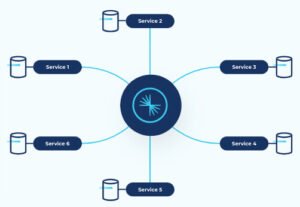Introduction:
Java Servlets and JavaServer Pages (JSP) are fundamental technologies for building dynamic web applications in Java. Servlets handle requests and generate responses on the server-side, while JSP allows developers to create dynamic web pages by embedding Java code within HTML markup. In this article, we’ll explore how to leverage Java Servlets and JSP to develop powerful and interactive web applications.
Understanding Java Servlets:
Java Servlets are Java classes that extend the functionality of web servers to generate dynamic content and handle client requests. Servlets adhere to the Java Servlet API, which defines a standard interface for interacting with web servers. Servlets are capable of processing HTTP requests (GET, POST, PUT, DELETE), accessing request parameters, managing session state, and generating HTTP responses dynamically.
Creating a Servlet:
To create a servlet, you need to create a Java class that extends HttpServlet and overrides the doGet() or doPost() method to handle HTTP requests. Here’s an example of a simple servlet that responds to HTTP GET requests:
import java.io.*;
import javax.servlet.*;
import javax.servlet.http.*;
public class HelloWorldServlet extends HttpServlet {
protected void doGet(HttpServletRequest request, HttpServletResponse response)
throws ServletException, IOException {
response.setContentType("text/html");
PrintWriter out = response.getWriter();
out.println("<html><body>");
out.println("<h1>Hello, World!</h1>");
out.println("</body></html>");
}
}
Deploying a Servlet:
To deploy a servlet, you need to package it as a WAR (Web Application Archive) file and deploy it to a servlet container such as Apache Tomcat, Jetty, or GlassFish. Servlet containers are responsible for loading servlet classes, managing their lifecycle, and handling HTTP requests.
Understanding JavaServer Pages (JSP):
JavaServer Pages (JSP) is a technology that allows developers to create dynamic web pages by embedding Java code within HTML markup. JSP pages are compiled into servlets by the web container at runtime, enabling the execution of Java code on the server-side to generate dynamic content.
Creating a JSP Page:
To create a JSP page, you need to create a file with a .jsp extension and include HTML markup along with embedded Java code enclosed within <% %> tags. Here’s an example of a simple JSP page that displays a greeting message:
<%@ page language="java" contentType="text/html; charset=UTF-8" pageEncoding="UTF-8"%>
<!DOCTYPE html>
<html>
<head>
<title>Greeting Page</title>
</head>
<body>
<h1>Welcome, <%= request.getParameter("name") %>!</h1>
</body>
</html>
Deploying a JSP Page:
JSP pages are typically deployed along with servlets within a web application. You can package JSP files along with other static resources (CSS, JavaScript) and servlet classes into a WAR file and deploy it to a servlet container.
Combining Servlets and JSP:
One of the key strengths of Java web development is the ability to seamlessly integrate servlets and JSP to create dynamic and interactive web applications. Servlets handle business logic and request processing, while JSP pages handle presentation and user interface elements. Servlets can forward requests to JSP pages using RequestDispatcher, allowing developers to leverage the strengths of both technologies in a single application.
Conclusion:
Java Servlets and JavaServer Pages (JSP) are powerful technologies for building dynamic and interactive web applications in Java. Servlets handle server-side processing and request handling, while JSP allows developers to create dynamic web pages by embedding Java code within HTML markup. By combining servlets and JSP, developers can create robust and feature-rich web applications that deliver a seamless user experience. With a solid understanding of Servlets and JSP, developers can leverage the full potential of Java for web development and build modern, scalable, and maintainable web applications.





